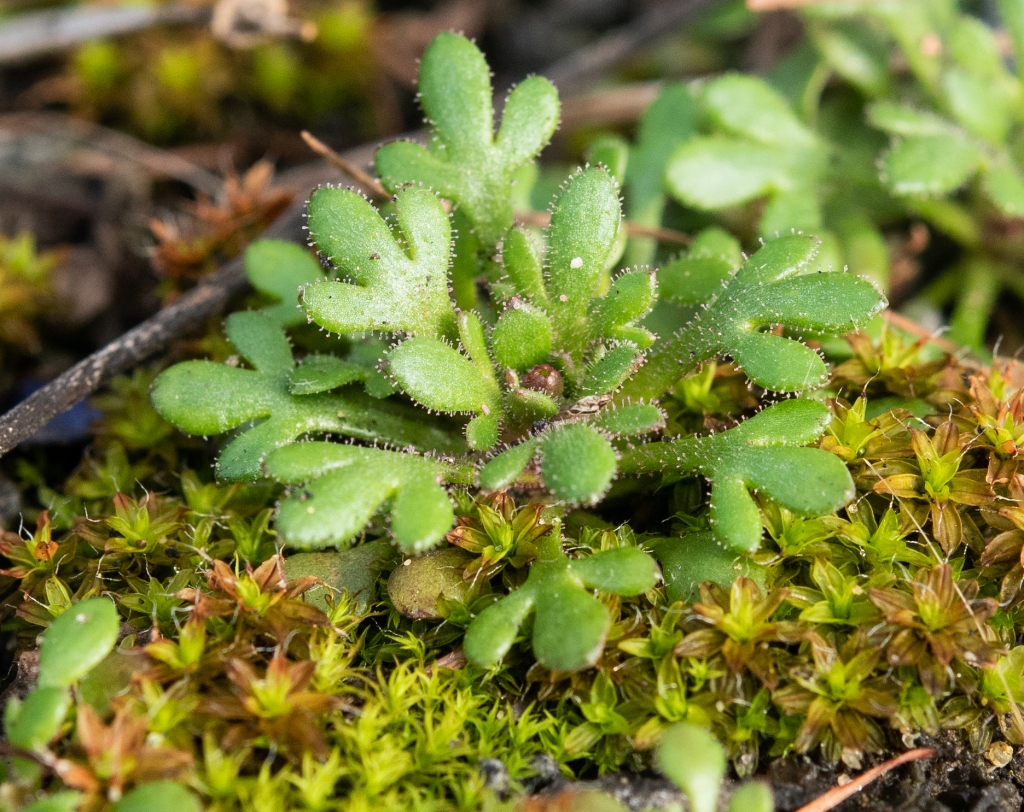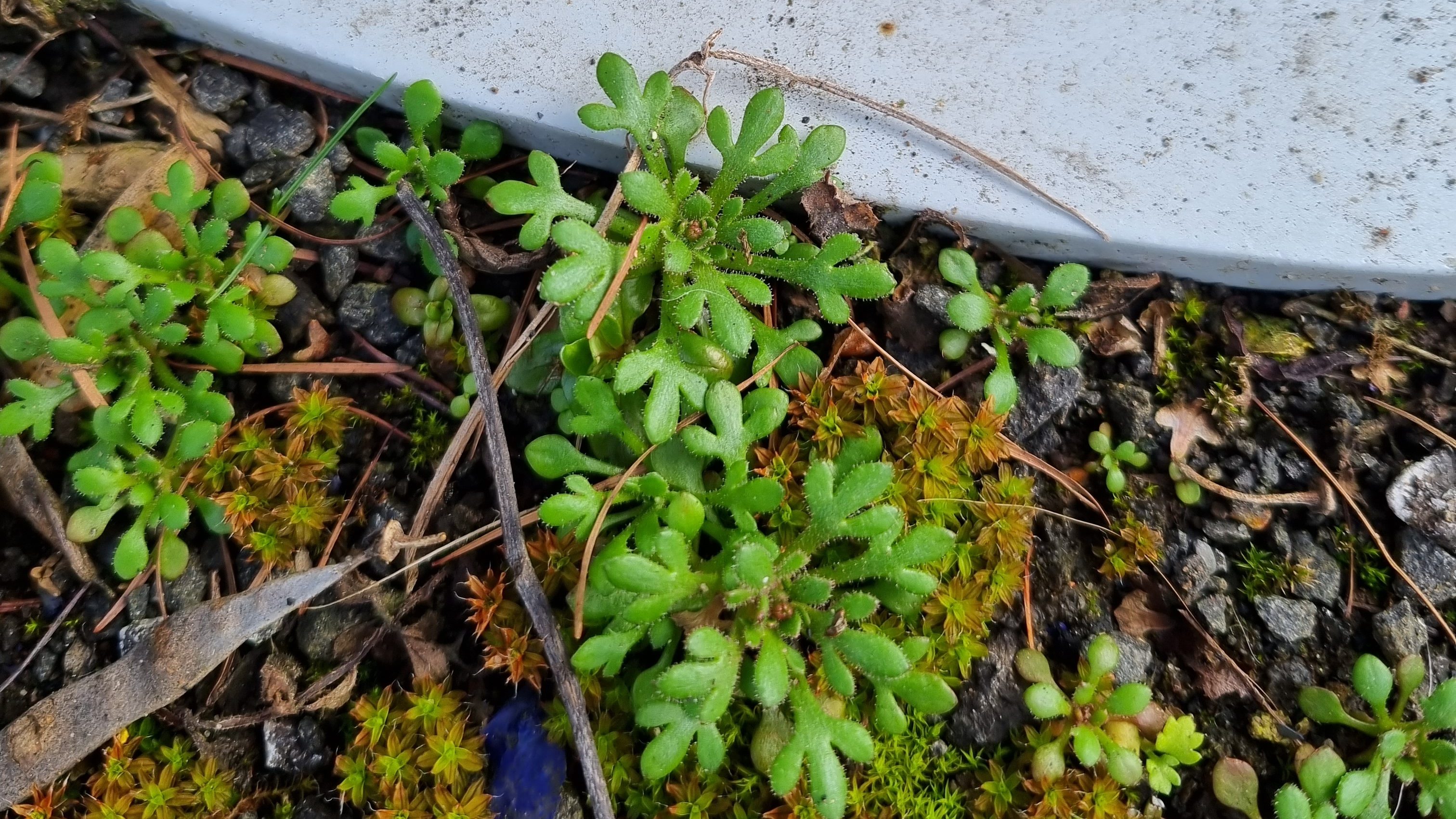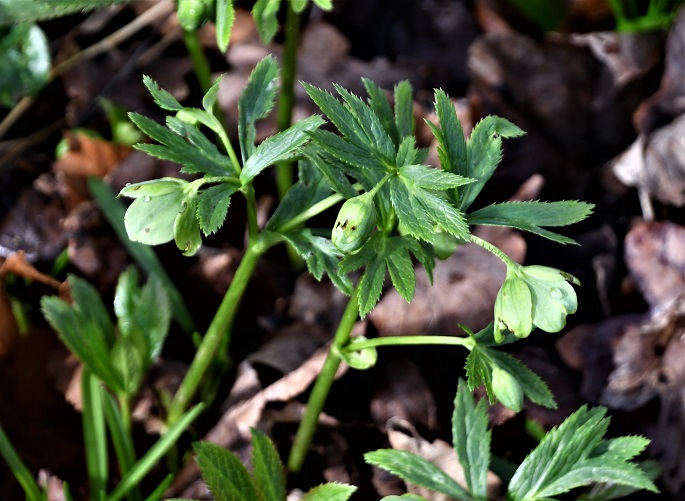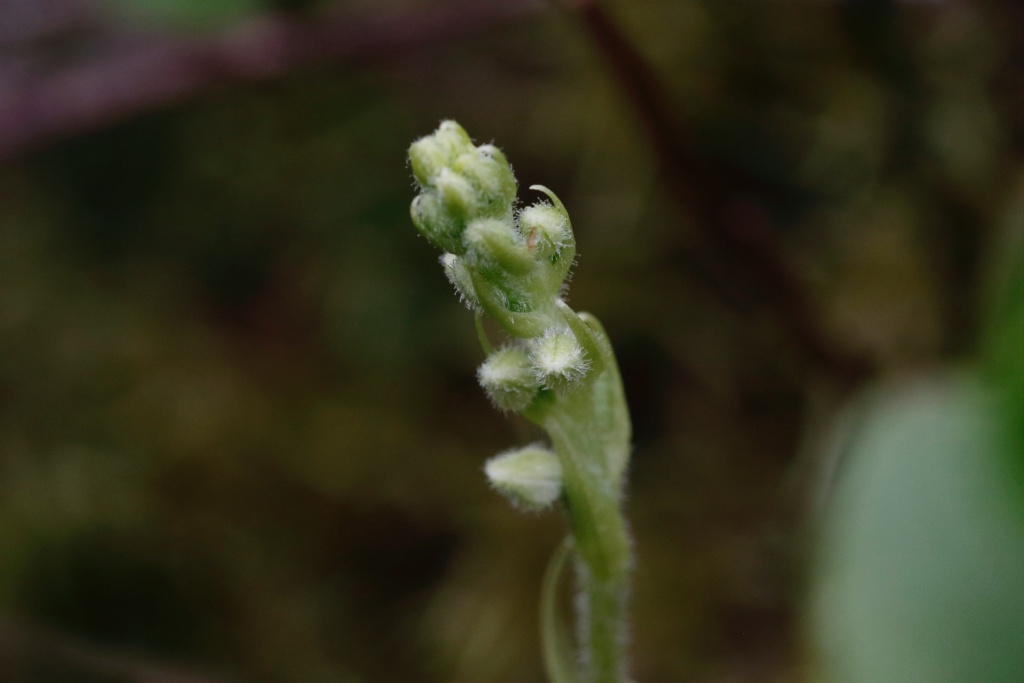Attracted by its humble, dainty white flowers and succulent-like leaves, Rue-Leaved Saxifrage has always been a plant I have wanted to see. Spurred on by recent posts for the Wildflower Hour Challenge on Twitter, whereby botanists of all abilities post their weekly findings on the Sunday of each week, I decided that I too would like to track down this plant.
Rue-leaved Saxifrage is a rare plant in the county and was thought to have been extinct from the region until it was rediscovered, as a colonist, at Corbridge train station in 2011 and was last recorded in 2015 (Groom, Young and Richards, 2020). So, it seems like Corbridge was my best bet to track down this plant.
It was on the 5th March 2023, a sunny day albeit fairly windy, when I was accompanied by my dad, who I hadn’t managed to organise an outing with for what seemed like months, set off to Corbridge in the hopes of locating the Rue-leaved Saxifrage.
This plant is not particularly fussy and finds its home on disturbed ground, walls, and cracks in the pavement. As such, we had set our eyes on the pavements and mason walls, the latter, a common sight within this beautiful village, as we headed towards the train station from the car park. The station itself was not particularly hard to locate and not far from the car park, unless, you have a poor sense of direction such as I, as I led us down the wrong path out of the two to choose from.


As we backed tracked towards the train station, we noticed signs of spring flowers were popping up along the hedgerows. Leaves of Alliaria petiolata, Garlic Mustard, and Arum maculatum, Lords and Ladies, had already emerged.
We searched outside the train station, at the coordinates NY989635, where the Rue-leaved Saxifrage was last recorded in 2015. Despite looking at walls, pavements and the disturbed grounds surrounding the area, we could not seem to find our target. Slightly disappointed, I looked towards the train station below the bridge on which we stood. There were mason walls running along the platforms to either side of the tracks. I thought, if we were to find them in this area, it could be there.
The walls on platform 1 were covered in lichen, they didn’t have enough gaps between the bricks for plants to take hold. However, as I looked down by the bench, I suddenly realized right next to our boots, were around 50 succulent-looking plants of varying sizes. Rue-leaved Saxifrage. We had found our target species growing on top of small cushions of moss.
To get a good view of these tiny plants, we had to get down on our hands and knees and that attracted strange looks from passengers on the train that just arrived on platform 2, but it was worth it. The leaves of the Rue-leaved Saxifrage are mostly three-lobed and are slightly curved downwards at the edge, giving it a flesh look, not so dissimilar to succulent plants at garden centres. The leaves are also covered in short and very sticky hairs, making it quite distinctive from other plants that occupy the same habitat such as Erophila verna, Common Whitlowgrass. Hopefully, given time, this local population, can spread around the village.
By Ho-Yin Wong, local naturalist.
















